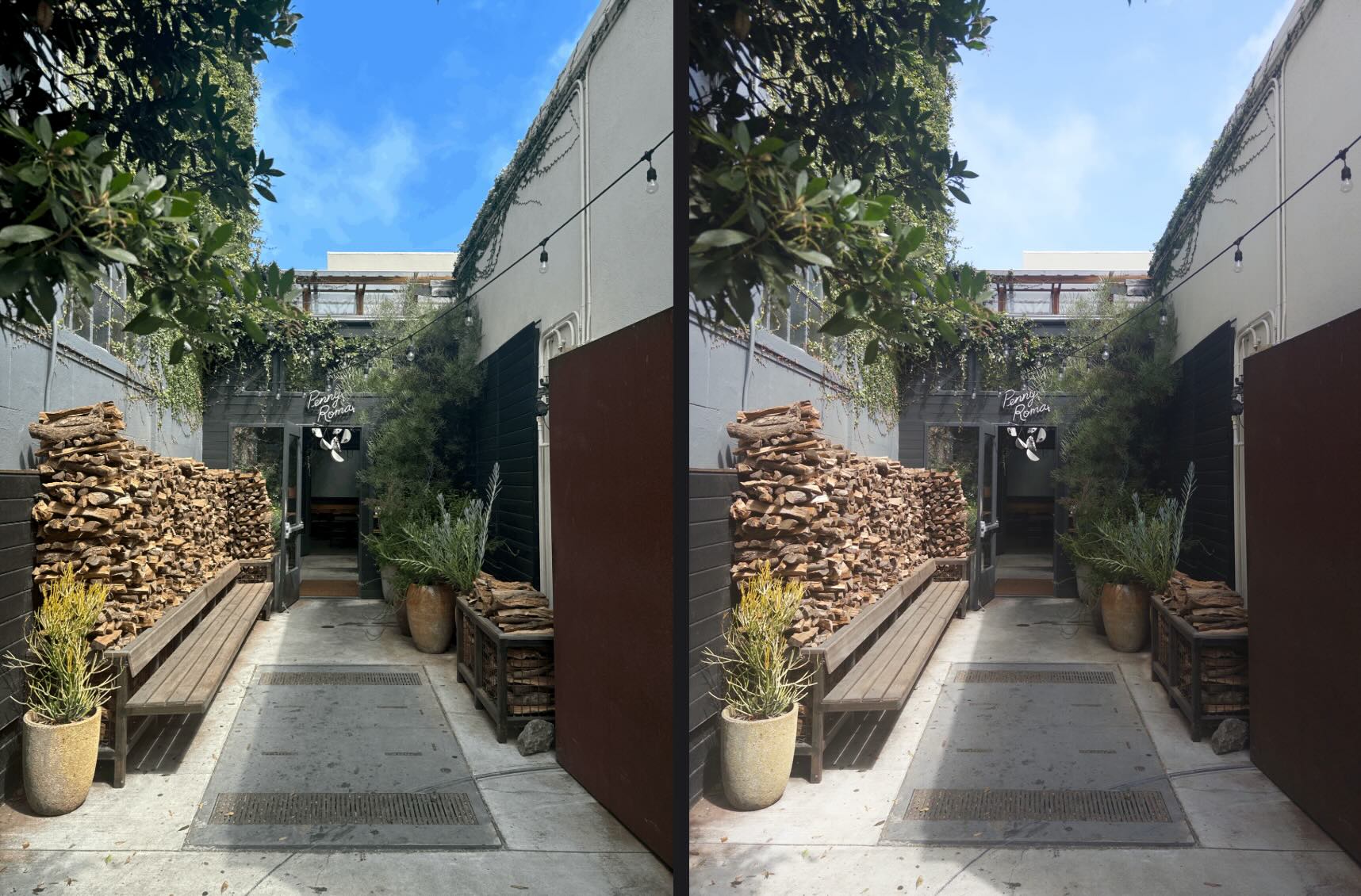

The popular iPhone and iPad camera app Halide recently introduced a new feature called Process Zero which, as the name suggests, takes photos without all the modern post-processing of smartphone cameras. The developers behind the app have now explained in detail how Process Zero works and what changes from a regular photo taken with the iPhone.
Post-processing images on the iPhone
It’s been a while since iPhone users have been complaining about how image post-processing has become exaggerated. Essentially, smartphones process images to make them look better and compensate for the small camera sensor that captures less light than a conventional DSLR camera lens.
However, when post-processing becomes exaggerated, images tend to look less natural. I’ve never been a fan of Smart HDR, and although Apple has made a lot of improvements in this respect with the iPhone 15 lineup, I still appreciate RAW photos because of their more natural look.
And that’s where Halide’s Process Zero feature comes in. When enabled, it skips almost all the processes used to enhance the final image after capturing it on the sensor. “It makes for very different looking photos: they can be contrasty, dark, imperfect, a bit grainy (especially in low light) but unique and authentic,” Halide explains.
As explained by the developers, Process Zero is more about offering users a choice rather than promising better photos. Some people like the look of photos with zero processing, while others prefer processed photos with better dynamic range and less noise.
Here’s how Halide’s Process Zero feature works
While the iPhone camera combines multiple images into a single one, Process Zero is based on a single shot. According to Halide, there’s still some level of post-processing when using Process Zero, but it’s all very minimal to keep the image more natural.
Process Zero works by taking a single photo — and collecting the raw sensor data. Halide gets to work right away to process the image very minimally: we make the shot more usable with slight enhancements.

A Process Zero photo is based on the RAW image captured from the sensor. Halide saves both RAW data and a JPG or HEIC image that can be easily shared with anyone. One downside is that third-party apps can only take RAW images at 12 megapixels on the iPhone, so there’s no way to capture 24 or 48 megapixel Process Zero images.
Process Zero is our own way to process that data, and we do it minimally but with our own flair to make it look nice. We think it’s pretty good, but we make sure to save both that raw data and the Process Zero-processed JPG/HEIC alongside one another in one file. That way, if you open up your shot in a raw editor, it’ll grab the raw data and you can edit to your heart’s content. If you share the shot on Instagram, however, you get your Process Zero shot.
Naturally, since Process Zero images don’t take advantage of Night Mode, the pictures will look noisier. Halide suggests that users take pictures with manual controls to reduce the ISO for better results. Also, since Process Zero images don’t have HDR, you need to make sure which object in the scene you want to adjust the exposure accordingly.
If you’re curious to learn more about how Process Zero works, make sure you read this article by the Halide team.
Halide is available on the App Store. It requires either a subscription or a lifetime license.
FTC: We use income earning auto affiliate links. More.